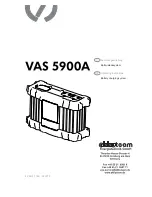
No. 8478
Operating instructions
Lipomat 6-800
•
The Lipomat 6-800 is suitable solely for
charging rechargeable Lithium batteries. Do
not attempt to recharge dry cells - explosion
hazard.
•
The charger is designed solely for use with
the 230V AC mains supply; do not connect it
to any other voltage.
•
Protect the charger from dust, dirt and
damp.
•
Use the charger only in dry indoor conditi-
ons.
•
Do not subject the charger to excessive heat
or cold, nor to direct sunlight.
•
Avoid shock and pressure loads, and do not
subject the Lipomat 6-800 to severe vibra-
tion.
•
Do not place the charger and the batteries
connected to it on any form of flammable
surface. Do not operate the charger in the
vicinity of inflammable materials or gases.
•
Do not leave the charger operating unsuper-
vised. It is normal for the charger to become
quite hot when operating.
•
Ensure that there is an unrestricted airflow to
the charger’s cooling slots. Never place it on
a carpet or felt surface.
•
If you will not be using the charger for a pro-
tracted period, disconnect it from the power
supply and any batteries connected to it.
•
Never charge any battery a second time
immediately after its initial charge.
•
Do not charge a battery which is already
warm or hot to the touch. Allow packs to
cool down to ambient temperature before
continuing.
•
Packs to be charged as a unit must consist
of cells of the same make, the same type
and the same capacity.
•
Take great care to maintain correct polarity
of the battery, and avoid short-circuits.
•
Read the battery manufacturer’s instructions
and adhere to them strictly.
•
At regular intervals check the charger case
and cables for damage.
These operating instructions for the battery
charger can only provide a global overview of
the methods of charging and handling rechar-
geable LiPo batteries, and should not be consi-
dered as a substitute for the instructions provi-
ded by the battery manufacturer.
Please be sure to read the instructions and
information supplied by the battery manu-
facturer.
•
Do not submerge the battery in water or any
other liquid.
•
Do not heat or incinerate the battery, or
place it in a microwave oven.
•
Do not short-circuit the pack or charge it
with reversed polarity.
•
Do not subject the battery to physical pres-
sure; do not deform or throw it.
•
Do not solder directly to the battery.
•
Do not modify or open the battery.
•
Do not charge the battery to a voltage higher
than 4.2 Volts per cell, or discharge it to a
voltage lower than 2.5 Volts per cell.
•
LiPo batteries may only be charged using a
charger designed expressly for this purpose.
Never connect the battery directly to a mains
PSU.
•
Observe the battery manufacturer’s stated
maximum permissible charge current.
•
Never charge or discharge the battery in
direct sunshine, or close to a heater or fire.
•
Do not use the battery in any location which
is subject to severe static discharges.
•
Any of these errors may cause the battery to
be damaged, explode or catch fire.
•
Keep the battery well out of the reach of chil-
dren.
If electrolyte should escape, keep it well
away from fire; the substance is highly
inflammable and may burst into flames.
•
Avoid the fluid electrolyte contacting your
eyes. If this should occur, rinse the affected
part immediately with plenty of clean water
before seeking medical attention.
•
If the fluid electrolyte should contact your
clothes or any other object, immediately
wash it off using plenty of water.
8
6. Safety notes
7. Safety Notes relating to Lithium-Ion-
Polymer batteries:









































